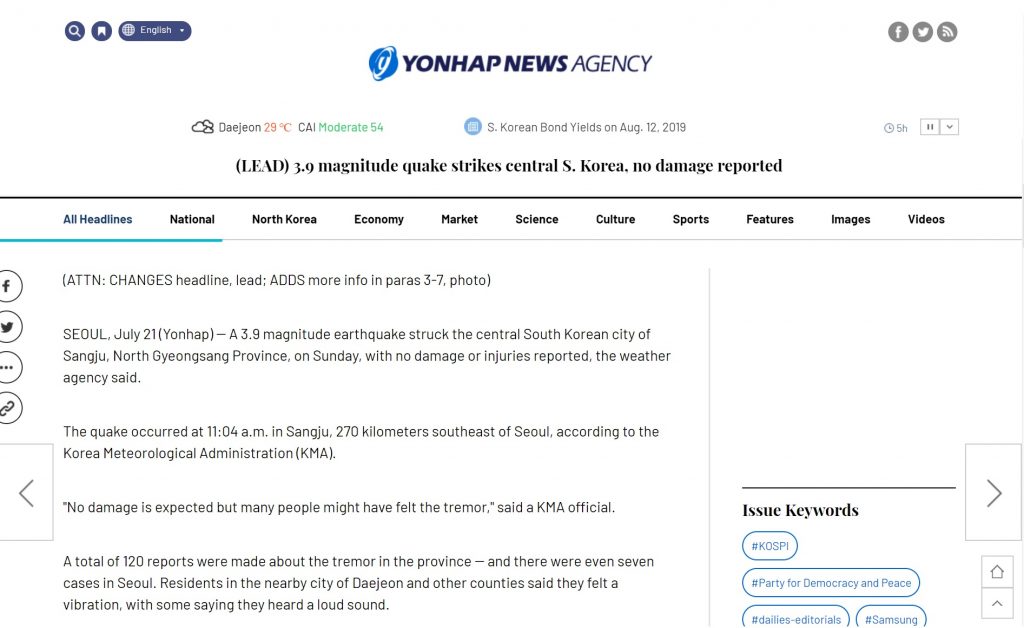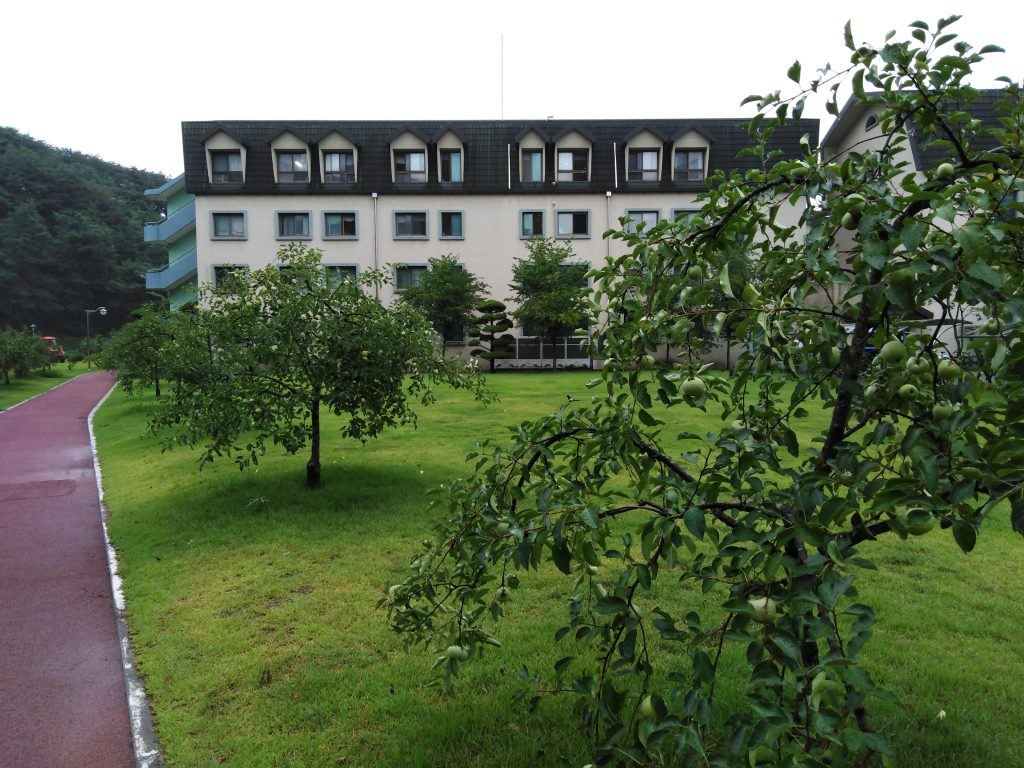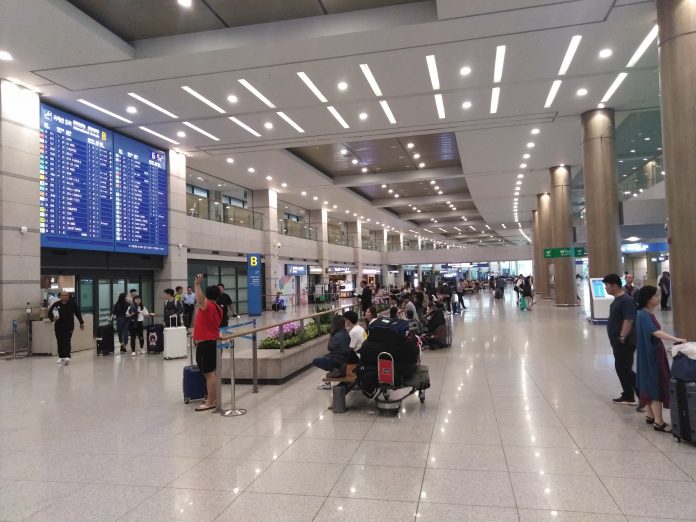It was 19 July, on the way to Magoksa Temple for the temple stay that was organised by KAIST, when a newscaster appeared on the television on board the bus with a typhoon warning. Typhoon Danas were to make landfall on Korea’s southern coast, with Jeju and Busan being on the direct trajectory. Daejeon and Magoksa would be spared the direct hit. But fortunately the typhoon had already been downgraded to a tropical storm and so only heavy rains with strong winds were expected. It would be a very wet and windy weekend.

It was 21 July, on the way back from a wet weekend at Boryeong Mud Festival, one of the many summer festivals that takes place all over Korea, including Daegu Chimaek (chicken and beer) and Buyeo Lotus festival. News broke then that a magnitude 3.9 earthquake had struck South-East of Daejeon at Sangju. Although it was a relatively minor earthquake with no casualties and minimal damage, the tremors were felt in Daejeon and even as far as Seoul. Major earthquakes in Korea are rare, but it brings to mind recent powerful earthquakes in 2016 and 2017 that struck in Gyeongju and Pohang just some 180 km away South-East of Daejeon. Earthquake emergency signs can be seen everywhere in Korea as a result, although it was reported that Korea was still unprepared for any major earthquakes.

It was summer time in Korea. Weather was expected to be hot and for several periods wet as well. Previous years temperatures have reached 40°C in Daejeon before. However this year, the weather has been much cooler with certain daytime temperatures hovering slightly above 20°C and night time temperatures mostly around there. In certain places of Korea like the mountain tops or deep underground (like in the Manjanggul caves of Jeju) the temperatures can drop to single digit temperatures as well. The rain in Korea is also slightly different from Singapore, it either rains very heavily for a short period of time or drizzles all day long. Such is the geography of Korea.































